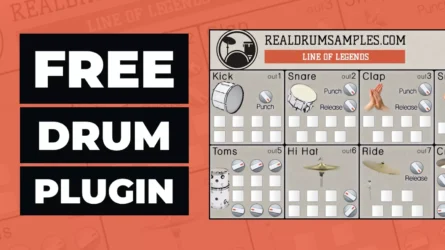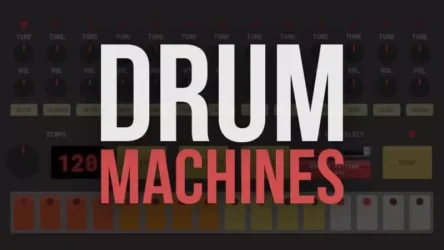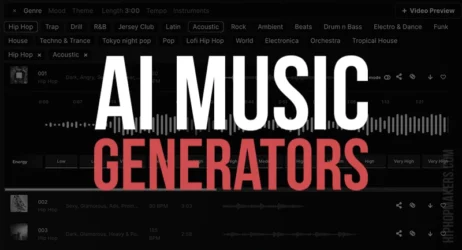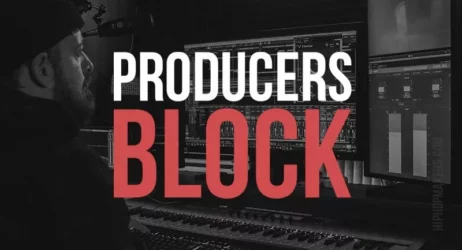Here is a beginner’s guide on how to make dubstep music. Learn about instruments and audio effects, and watch Dubstep tutorials.
This guide explains everything from the unique pace of dubstep music to the heavy drum beats and catchy melodies that make it special.
You’ll learn about the “wobble bass,” a cool sound that’s a big part of dubstep. The guide also talks about using different sound effects to make your music exciting.
Plus, it includes video tutorials to help you get a better idea of the sounds and effects used in dubstep tracks. You will receive a history lesson about dubstep and find answers to people’s common questions about this distinct music style.

Related: Free Dubstep Sample Packs | Free Dubstep VST Plugins
How to Make Dubstep Music
Here we break down common dubstep instruments, effects, and dubstep song arrangement structure.
1. Dubstep Tempo
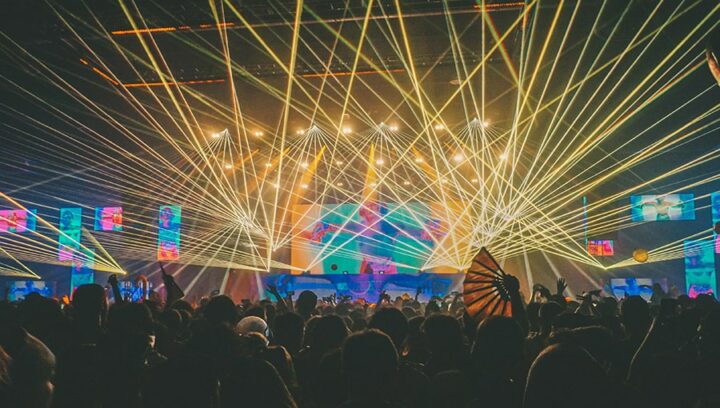
Dubstep has no fixed BPM range, but most producers make their songs around 140 BPM.
The most common Dubstep tempo is 140 BPM.
If you want to change the feel of your dubstep track a bit, try dividing your BPM by two, in this case, 70 BPM.
Make sure you try other tempo ranges such as 150 BPM and 160 BPM too. It may give you a different feel.
2. Drum Pattern
Dubstep drums tend to be heavy-sounding and heavily layered.
Make sure you take some time to pick the right samples a the start instead of having to fix them later.
For the kick, pick a sample with a good transient and a fast release. Make sure to think in advance about how it’s going to interact with the other elements.
Related: Free Music Samples
Make sure your snare has a tail. You can do it with a gated reverb in the snare or layering white noise above it every time it hits.
Check out this dubstep tutorial on drums and hats in FL Studio.
3. The Lead Melody
A saw synth type is typically used for the lead, generally with different oscillators slightly detuned from each other.
Use your synth’s legato and glide tools to give your leads some movement and better fit in the overall mix.
Another common practice is to use vocal shots as the lead. You take a vocal shot and load it into a wavetable synthesizer, from there, you can customize it to your liking.
Check out these two videos. The first one is about making a traditional dubstep lead in Serum, the second is about vocal leads:
4. Bass Pattern
In dubstep, the most used type of bass is the wobble bass. A wobble bass is a bass with an LFO effect.
LFOs are modulators that you can use to modulate filters, pitch, and every aspect of your synth. It will give your sound a very interesting movement characteristic. Make sure to learn about synth LFO and put it into practice.
Don’t use only one synth for the bass: combine different ones while being aware of their place in the mix.
This tutorial shows you how to make a dubstep bass in the Serum plugin:
5. Harmony
For harmony, try using the LFO trick in pad synths. Make sure to sync it to your DAW BPM first.
You can also automate the pad filters: try making the filter rise every time a chord is played.
Use pitch bend effects sparingly in the transitions to make your harmony more interesting.
Try using instruments that are unconventional for the genre, such as pianos and electric pianos. It may sound surprisingly good.
6. Effects & Transitions
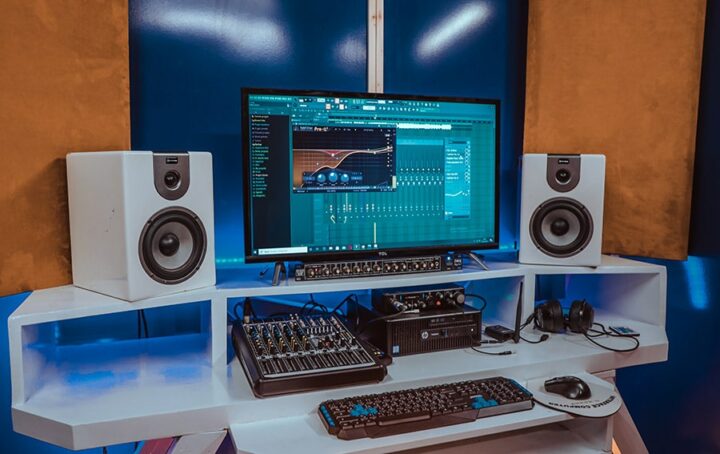
Most dubstep music tends to be effect-heavy. Try gathering a few build and impact samples on the internet.
Don’t rely solely on samples: learn how to make rising synths using LFO and pitch bends.
You can also use a white noise synth to make your own effects.
In the transitions, make sure to get the effects to work in harmony with the drum fills.
7. Dubstep Song Arrangement
Dubstep usually follows the basic EDM structure but with a shorter intro. Generally 15 seconds.
This is the typical structure for a dubstep track:
Intro – Verse – Drop – Verse – Drop – Outro
Remember, Dubstep music is not as “locked” to the structure as other EDM genres, so try to vary things a bit.
Dubstep Music Tutorials
Learn how to create a Melodic Dubstep beat in FL Studio.
How to Make a Mainstream Dubstep Drop
Watch how to create a basic drum pattern and synth melody.
How to Make a Dubstep Song
Here is another helpful video tutorial on how to make Dubstep in FL Studio.
How to Make Dubstep in Ableton Live
Tutorial on how to use Serum to make Dubstep Music in Ableton Live.
Dubstep Sounds For Beginners
Dubstep music production tips on popular VST instruments and settings.
Dubstep Common Questions
What is Dubstep Music?
Dubstep music is a genre or type, of electronic music. Just like how there’s rock music with electric guitars and pop music with catchy choruses, dubstep has its own unique characteristics that make it stand out.
Dubstep originated in South London, England, around the late 1990s. But it didn’t start getting popular until the early 2000s. One of the interesting things about dubstep is how it brings together different kinds of sounds.
It’s kind of like a mix of reggae, drum, and bass, and UK garage music, but with its own unique twist.
When you listen to dubstep, you’ll notice it has a distinct beat structure. It usually has a tempo of roughly 140 beats per minute (think of this as the music’s “speed”), but what’s really interesting is the way it emphasizes the bass.
The beats are usually arranged in a pattern that leaves room for a lot of low, rumbling bass sounds, and these are interspersed with periods of silence or quieter music. This creates a kind of “wobble” effect, and it’s part of what makes dubstep sound so unique.
Another thing you’ll notice about dubstep is the heavy use of bass drops. A bass drop is when the music builds up tension and then suddenly releases it with a powerful, deep bass sound.
It’s like a musical rollercoaster ride, taking you up to the top of a hill and then suddenly dropping you down. These bass drops are a big part of the dubstep experience and are what make people jump up and down at concerts.
In a nutshell, dubstep is a genre of music that’s all about bold, bass-heavy beats, wobble effects, and thrilling bass drops. If you like music that’s intense, intricate, and a little bit different, dubstep could be just the thing for you.
Who Are Popular Dubstep Artists?
These are some of the most popular Dubstep music artists.
- Skrillex
- Diplo
- Major Lazer
- Dj Snake
- Zeds Dead
- Flux Pavilion
- Krewella
- Borgore
- Seven Lions
- Kill The Noise
As we conclude this comprehensive guide on how to make dubstep music in seven steps, let’s take a moment to reflect on the key elements that make this one of the most popular genres in the EDM industry.
A blend of modern dubstep and the principles from which dubstep began helps you to create your own sound.
This can be achieved by exploring different synth sounds, from heavy bass patches to lead synths, and carefully layering them across your entire track.
Many dubstep tracks are defined by their syncopated rhythm and the quintessential third beat emphasis, typically marked by a strong bassline or kick drum hit.
Your bass sound, whether created using a sine wave or any other sound design technique, needs to blend with your snare drum, hi-hat, and other percussive elements to create that signature low-end punch that defines high-quality dubstep.
While producing dubstep, don’t hesitate to experiment. Maybe try adding a chorus effect or adjusting the filter cutoff on your lead synth to keep things interesting.
Remember, making dubstep doesn’t always require expensive tools; there are many free software and programs out there that can help you design your own sound and produce tracks that sound just as good as those created with professional software.
When working on your first drop or the main elements of your dubstep track, it’s crucial to make sure that everything sounds good together.
This is the essence of sound design in dubstep and other genres of bass music. A solid understanding of these aspects is what you need to know to be recognized in the dubstep community and beyond.
Here’s a bonus tip: Always pay close attention to your mix’s low end. The genre of dubstep is recognized for its powerful bass. Therefore a properly blended low-end can be the determining factor in transforming a good song into an outstanding one.
Additionally, don’t be afraid to draw inspiration from dance music and other genres. After all, the ability to incorporate unique elements and make them sound like they belong in a dubstep track is what sets successful dubstep producers apart.
Remember, making dubstep is a journey, not a destination. Always be ready to learn, experiment, and, most importantly, have fun with your sound. Keep the dubstep community vibrant and growing by bringing your unique contributions to one of the world’s most loved music genres.
Do you have any dubstep music production tips? Do you attend any dubstep music festivals?
Related: How to Make Beats

